The 1948 National Service Act, Effective From 1st
January 1949
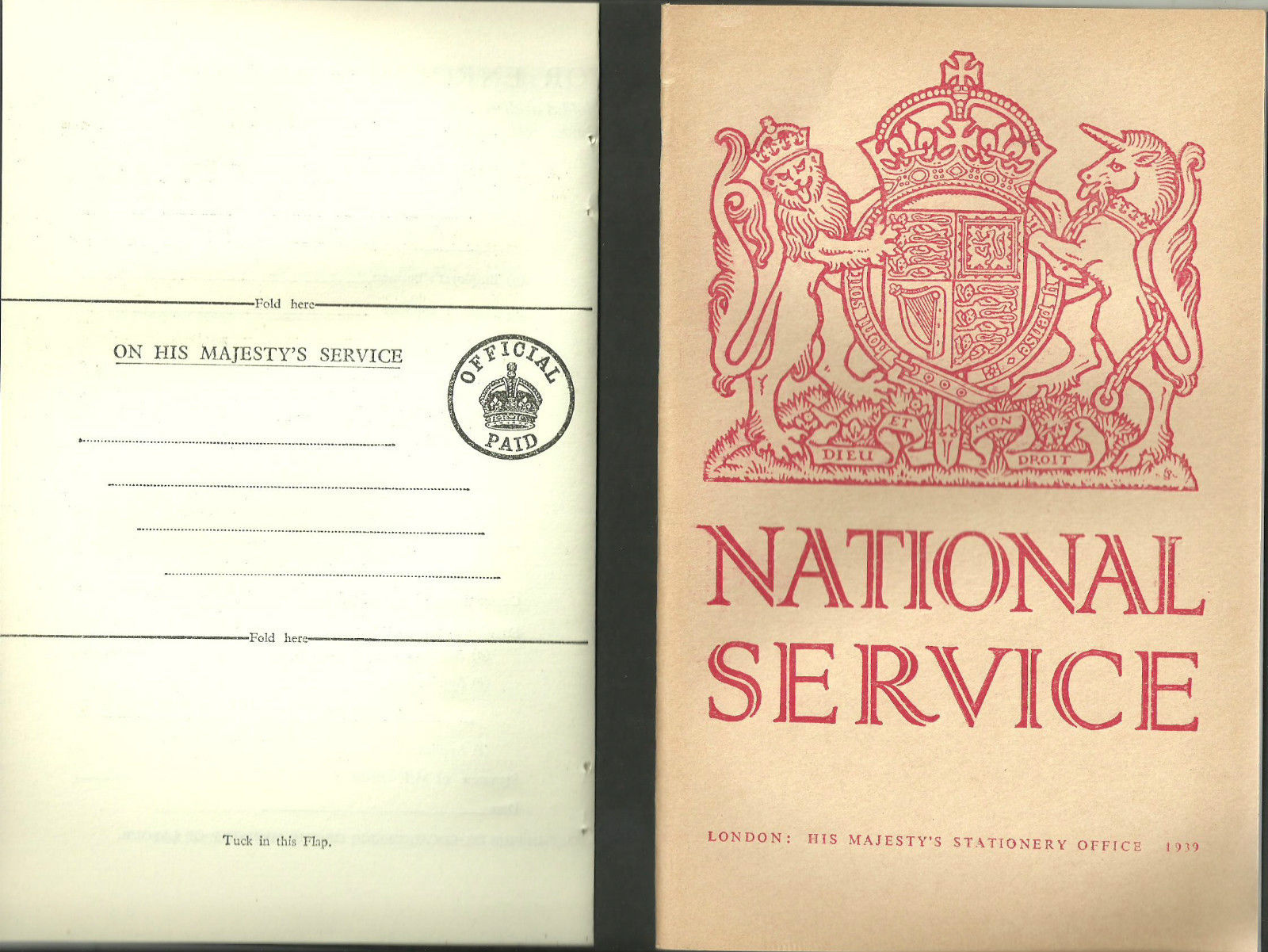
The 1948 National Service Act, Effective From 1st
January 1949

The Romans had a saying – ‘If you wish for peace, prepare for war’….and that was the reasoning behind post-war conscription, which was commonly known as National Service.
At the end of the war Britains armed forces were three million strong when all men aged between the ages of 18 – 41 had been conscripted during the war years.. Following the war there was a need for these conscripts to be released from service as soon as possible in order to bring manpower back to the rebuilding of industry, manufacturing and farming in war-torn Britain.
It soon became evident that, with Britains commitments
in Europe, Asia, The Middle East and Africa, the limited numbers volunteering
for the armed services was insufficient. With the threat of the Cold War looming,
Malaya, Kenya and Cyprus decolonisation wars in progress, Britain was unable
to provide a reserve of troops through voluntary recruitment. Discussions
began in Parliament regarding an extension to the 1939 National Service Act
which covered military conscription. On 18th July 1947 the first new National
Service Act came into being, which would come into force on the 1st January
1949 establishing a period of 12 months service for all men between the ages
of 17-21. The advent of the Cold War and the Malayan Emergency resulted in
the Act being amended in December 1948 which increased the period of service
to 18 months, with a further 4 years on the reserve list. In 1950, following
Britains involvement in the Korean War, the service period was extended once
again to two years with the reserve period reduced by six months.
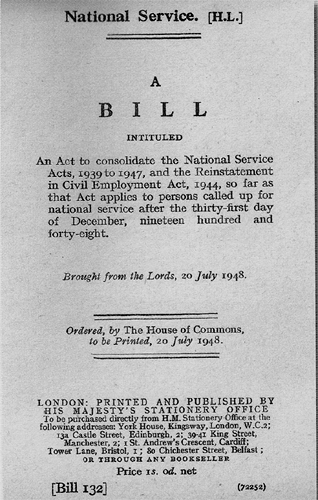 |
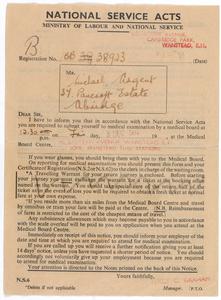 |
From the 1st January 1949, all young men were conscripted. Every fortnight some 6,000 young men received instructions to register and attend a medical examination. Very few were exempt. These included those working in what was considered as essential services – the merchant navy, coal-mining and farming, – but should they cease working in these areas before they reached the age of 25, they too would be called up for National Service. Others included men “in holy orders”, those certified under the Lunacy & Medical Treatments Acts and those registered as blind.
During the period of National Service a total of 2,301,000
were enlisted. The Army took 1,132,872, the RAF taking most of the rest, whilst
the Navy relatively few (service in the Royal Navy required a five year commitment).
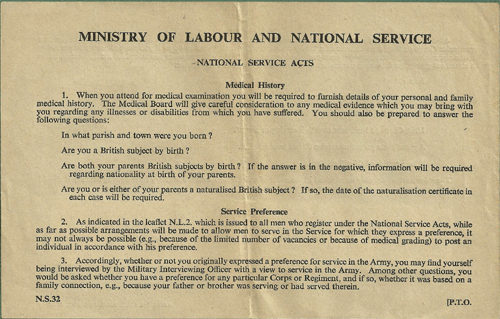 |
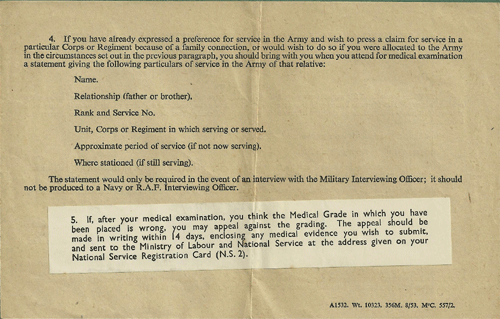 |
National Service Acts
Ministry of Labour and National Service
Dear Sir,
I have to inform you that in accordance with the National Services Act you are required to submit yourself to medical examination by a medical board at….am on……day ……..19… at the Medical Board Centre………………………
If you wear glasses, you should bring them with you to the Medical Board.
On reporting for medical examination you should present this form and your Certificate of Registration (N.S.2 or N.S.62)to the clerk in charge of the waiting room…………..
Once registered, about 2 weeks later followed the order to
take a medical. Failure to report was a criminal offence - punishable by a
period of up to two years in prison and a £100 fine.
The medical usually took about 2 hours, followed by an interview and an intelligence test. Everyone was tested, measured and weighed, poked and prodded in unfamiliar ways.
Sight and hearing checked and bloods taken. All this was to grade the men in levels of fitness and his ability to serve. Many saw this as an opportunity to be classed as “Medically Unfit” and known scams included spiking urine samples, drinking soapy water to bring on respiratory problems and walking “like a penguin” to show they had flat-feet.
Having been Graded (I – IV) in fitness an aptitude test followed. A simple test based on words and number sequences used to assess suitability for a branch of service. During the interview with an officer the men could then express their choice of branch within the services – but this was very seldom taken into consideration even though many were qualified to serve in their chosen branch. Anyone with aspirations of joining the RAF to become a pilot were soon put in their place being told they had to sign on for a minimum of 8 years.
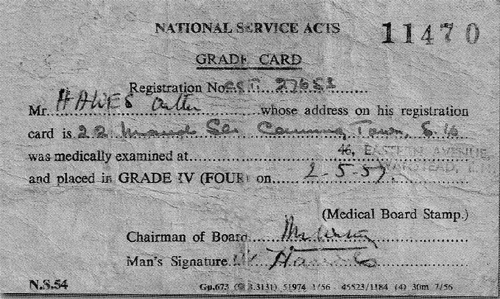 |
 |
During the interview they were also given the option of two or three year service – the pay for the three years being much better – approx one pound eight shillings for 2 years or two pounds five shillings for three (reduced, of course, by deductions for barrack room breakages which were applied even if nothing was broken)
At the medical, there was an opportunity for some to apply for a ‘deferred entry’. These included those who had a university place or apprenticeships, but once completed they did not escape and had to put their careers on hold until they had completed their National Service. Appeals by husbands or sons keeping the family usually fell on deaf ears and were rejected.
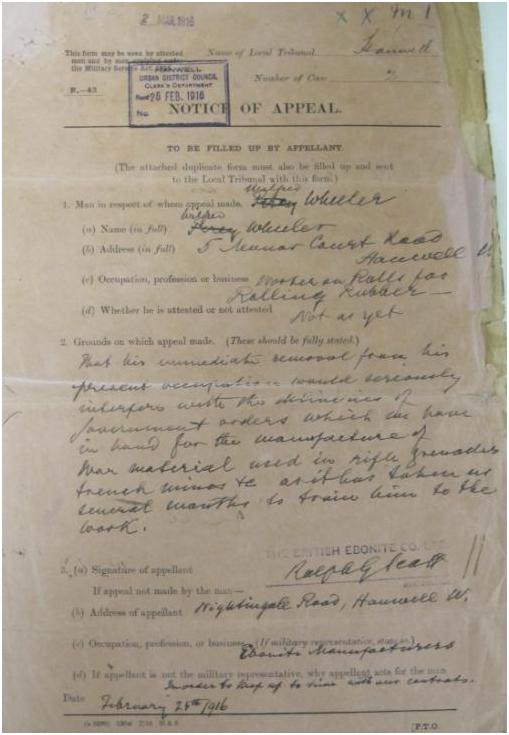 |
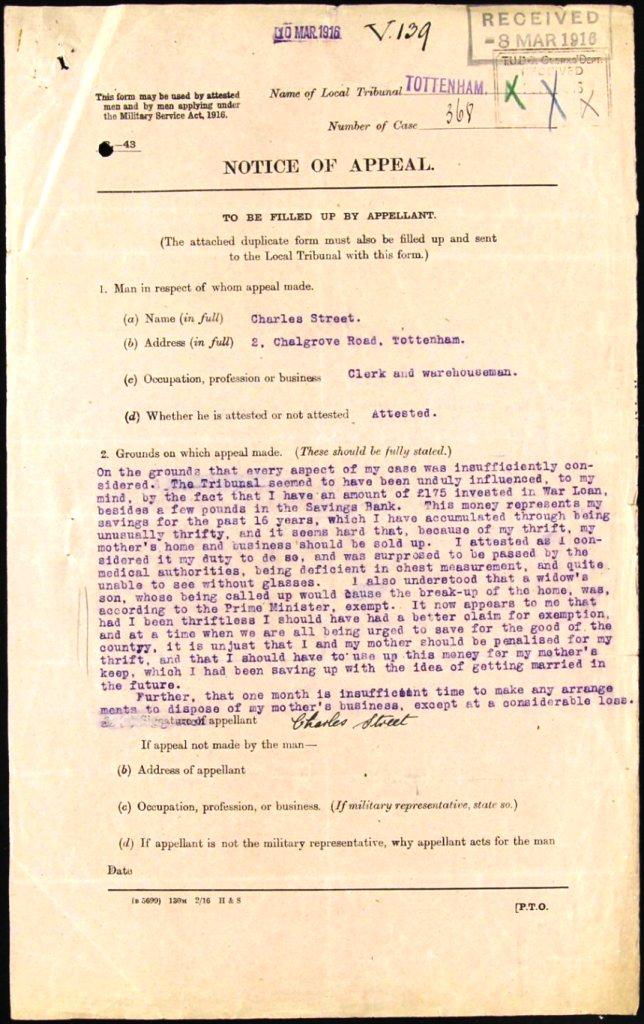 |
Conscientious Objectors had their cases heard at a tribunal and those with deeply religious beliefs, such as Quakers, held the most sway. Political objectors, such as the Scottish Nationalist who refused to serve in the army of the United Kingdom, were declined. Only 0.5% of cases were successful at these tribunals.
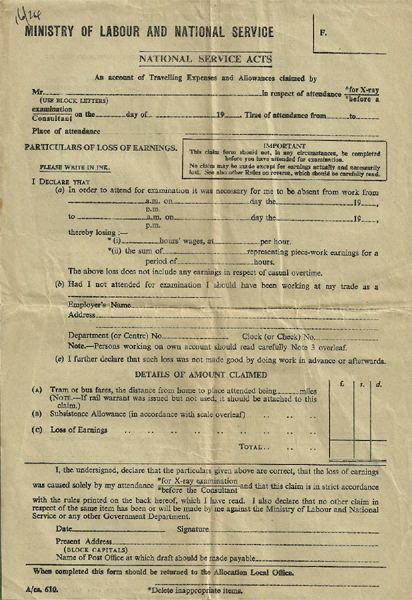
|
 |
For the majority, about six weeks after the medical the brown official envelope arrived detailing their instructions to report to one of the large training camps scattered throughout the country. It also contained a rail warrant and, on every other Thursday, nervous new recruits would be seen on railways platforms up and down the country, their civilian life coming to an end, their future unknown.
Homesickness kicked in for many as family members and loved ones waved them goodbye. For many it was the first time away from home and the town/villages they lived in. Little did they know it was to be all “Bull and Blanco” for the next eight to ten weeks
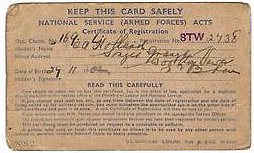 |
 |
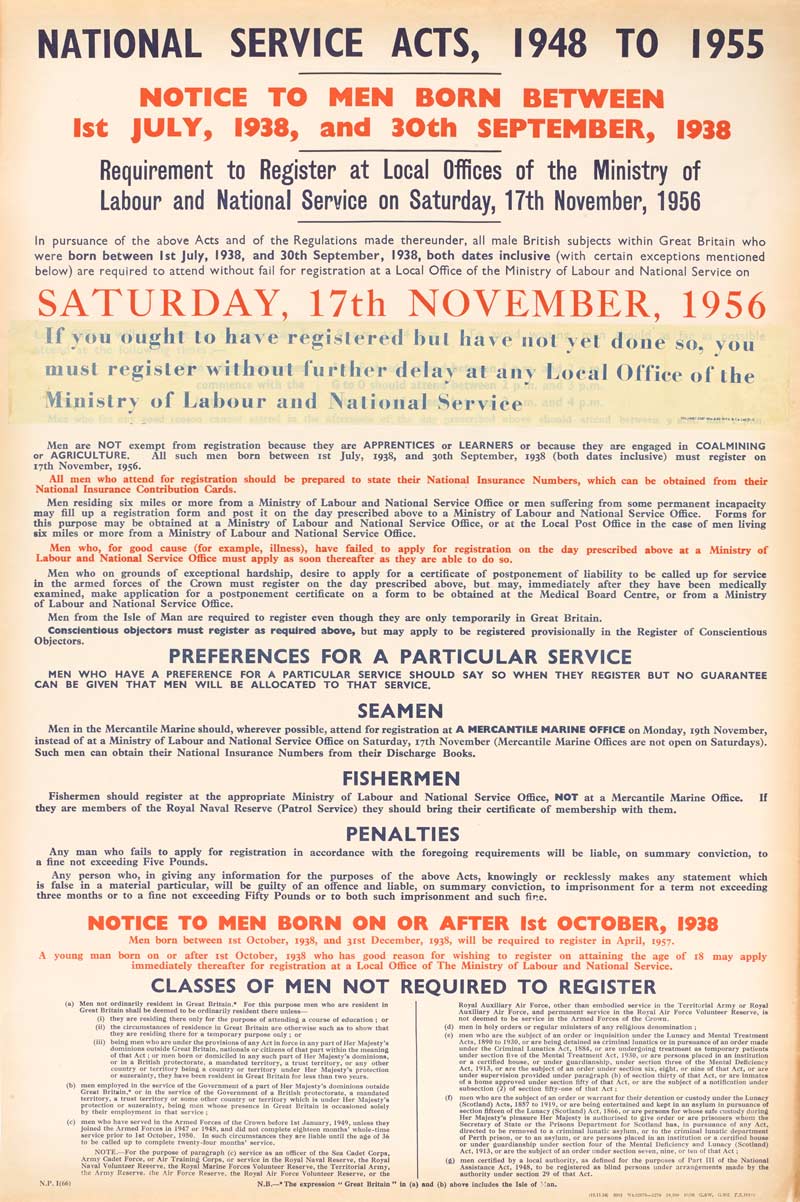
In an era when it was hard to recruit enough regular soldiers to meet Britain's commitments in Europe, the Middle East, Africa and Asia, conscripts trained to police regions occupied by the British after the war, to provide a reserve of troops who could be called up in any future major conflict, and they were available for immediate deployment, notably in the decolonisation wars in Malaya, Kenya and Cyprus. Most of them were not yet old enough to vote (voting age was only lowered from 21 to 18 in 1970) and felt disempowered. They had scant pay, and provided a cut-price way for Britain to maintain its illusory great power status. But withdrawing this number of fit youngsters from the economy at a time of labour shortage harmed British post-war reconstruction.
In 1957 National Service with the Navy and the Air Force was discontinued. Registration remained compulsory but the intake to the Army was cut to almost a third (12,000 trainees) by instituting a ballot for selection. On 24 November 1959 Cabinet decided that National Service call-ups should be terminated and that arrangements for the January 1960 intake would be cancelled. . In November 1960 the last men entered service, as call-ups formally ended on 31 December 1960, and the last National Servicemen left the Armed Forces in May 1963.